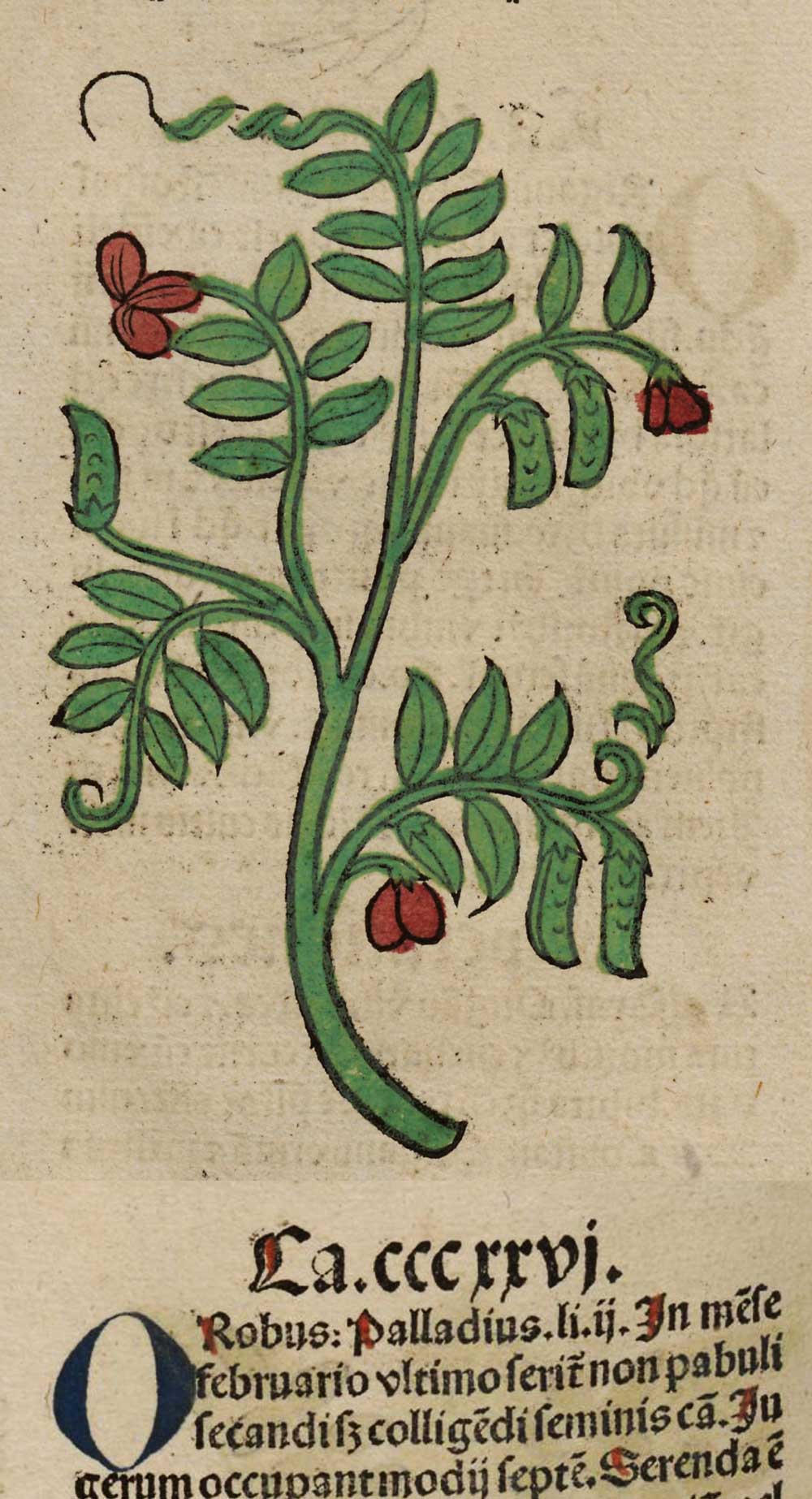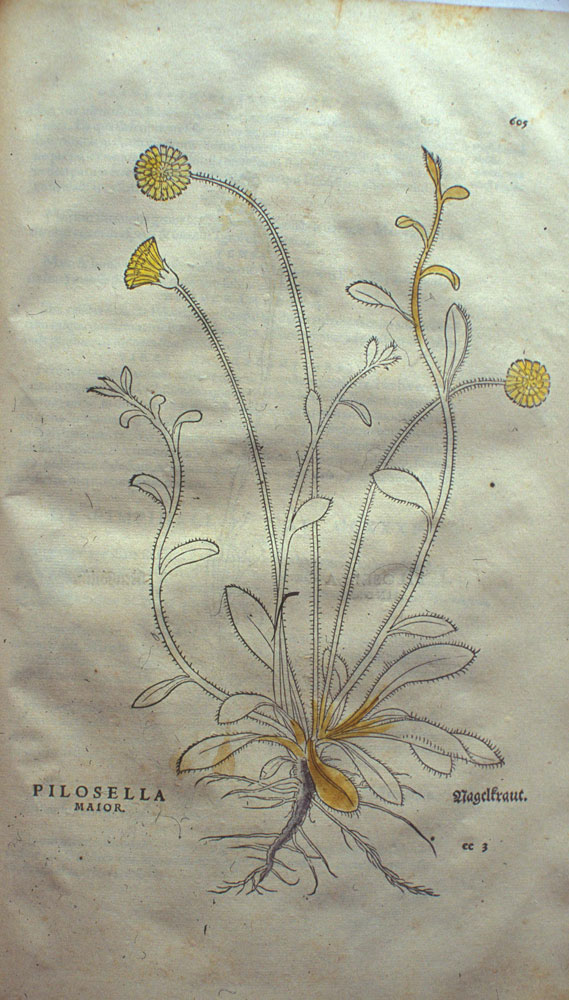Among the plants named for their admirable qualities.
Notes
Papaver
Hieracium pilosella L.
Hieracia
Communia autem sponte nascentibus candor, caulis interdum cubitali longitudine, thyrso et foliis scabritia. ex iis rotunda folia et brevia habentem sunt qui hieracion vocent, quoniam accipitres scalpendo eam sucoque oculos tinguendo obscuritatem, cum sensere, discutiant. sucus omnibus candidus, viribus quoque papaveri similis, carpitur per messes inciso caule, conditur fictili novo, ad multa praeclarus. sanat omnia oculorum vitia cum lacte mulierum, argema, nubiculas, cicatrices adustionesque omnes, praecipue caligines. inponitur etiam oculis in lana contra epiphoras. idem sucus alvum purgat in posca potus ad duos obolos.
The characteristics, however, common to the wild kinds [of lettuce] are whiteness, a stem occasionally a cubit long, and a roughness on the stalk and on the leaves. Of these kinds, one with round, short leaves is called by some hieracion (hawkweed), since hawks, by tearing it open and wetting their eyes with the juice, dispel poor vision when they have become conscious of it. The juice in all of them is white, in its properties, also, like that of the poppy; collected at harvest by cutting the stem, it is stored in new earthenware, being excellent for many purposes. With woman’s milk it heals all eye-diseases—white ulcers, films, all wounds and inflammations, and especially dimness of sight. It is also applied to the eyes on wool for fluxes. The same juice purges the bowels if drunk in vinegar and water in doses not exceeding two oboli.
Hieracia
Pliny xx. 7, § 26.
hieracia
De ίέραξ, épervier: on préntendait que l’épervier s’en servait pour éclaircir sa vue: «Hieraciam vocent quoniam accipitres scalpendo eam succoque oculos tingendo obscuritatem, quum sensere, discuitant». Pline, XX, 26. L’espèce à feuilles courtes et rondes dont parle Pline est une Crepis. L’ίέράχιον μιχρόν de Dioscoride (III, 73) peut être une Crepis (C. virens, Vill. ?), une Picris ou un Hieracium. Ce dernier nom est celui d’un genre très nombreux de la famille des Composées, dont l’espèce la plus usitée dans l’ancienne matière médicale était H. pilosella, L. L’hieracia de Rabelais est, pour Sainéan, Tragopogon picroides, L. (H.N.R., 120).
hieracia
thus hieracia, from the Greek word for hawk, thanks to which that bird sharpened its sight…
par les admirables qualitez
Cf. encore, De latinis nominibus pour tous ces détails. Le seule exemple qui ne s’explique pas de soi-même est hieracia; «Hieracum nomen ex eo venit quod [l’epevier] succo hujus herbae oculorum obscuritatem discutiant». Eryngion (« barbe à bouc ») serait un contrepoison. Que-fait-il dans cette liste?
Hieracia
De ἰέφαξ, «épervier»; l’épervier s’er servirait pour s’éclaircir la vue (Pline, XX, xxvi).
Hieracium
Hieracium. [Latin, adopted from Greek ierakion name of a plant, formed on ierac hawk.]
A large genus of Composite plants, mostly with yellow flowers; called in English, Hawkweed.
1664 John Evelyn Kalendarium hortense (1729) 209 June… Flowers in Prime… Geranium… Hieracium.
1741 Complete family piece and country gentleman and farmer’s best guide ii. iii. 361 Columbines, and Hieraciums.

